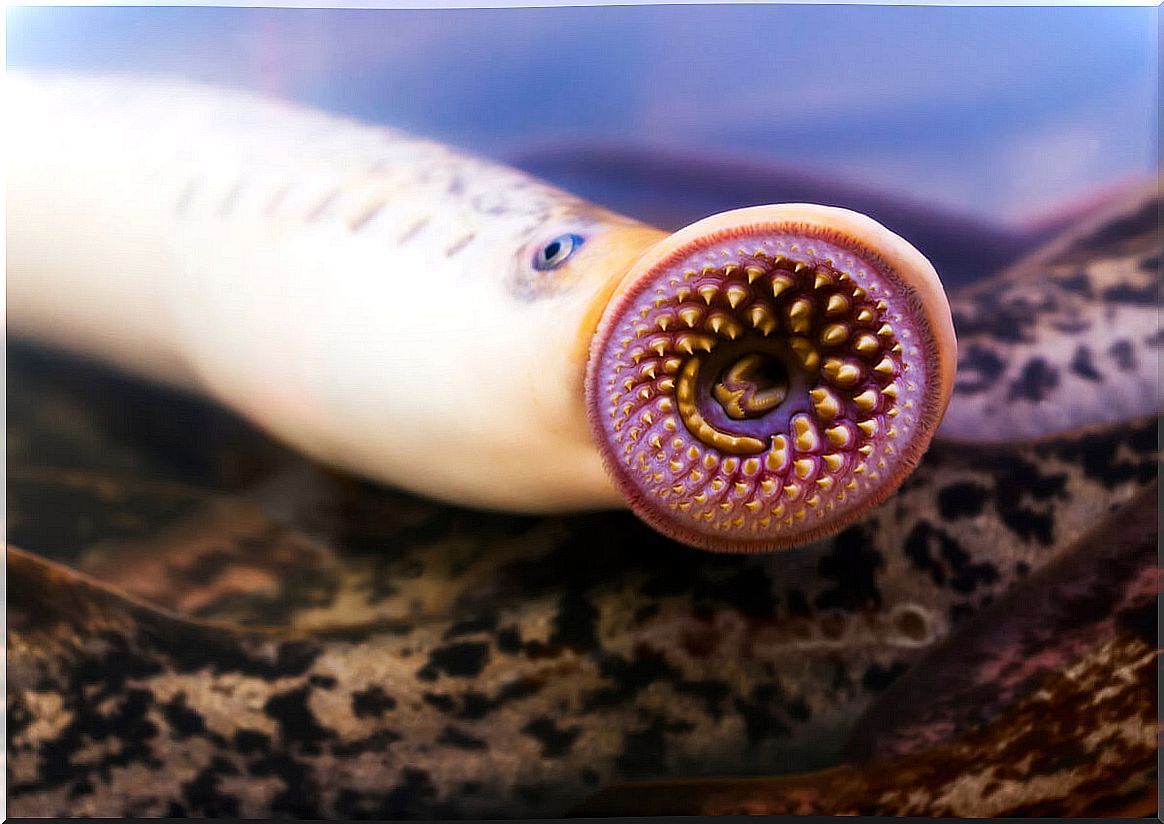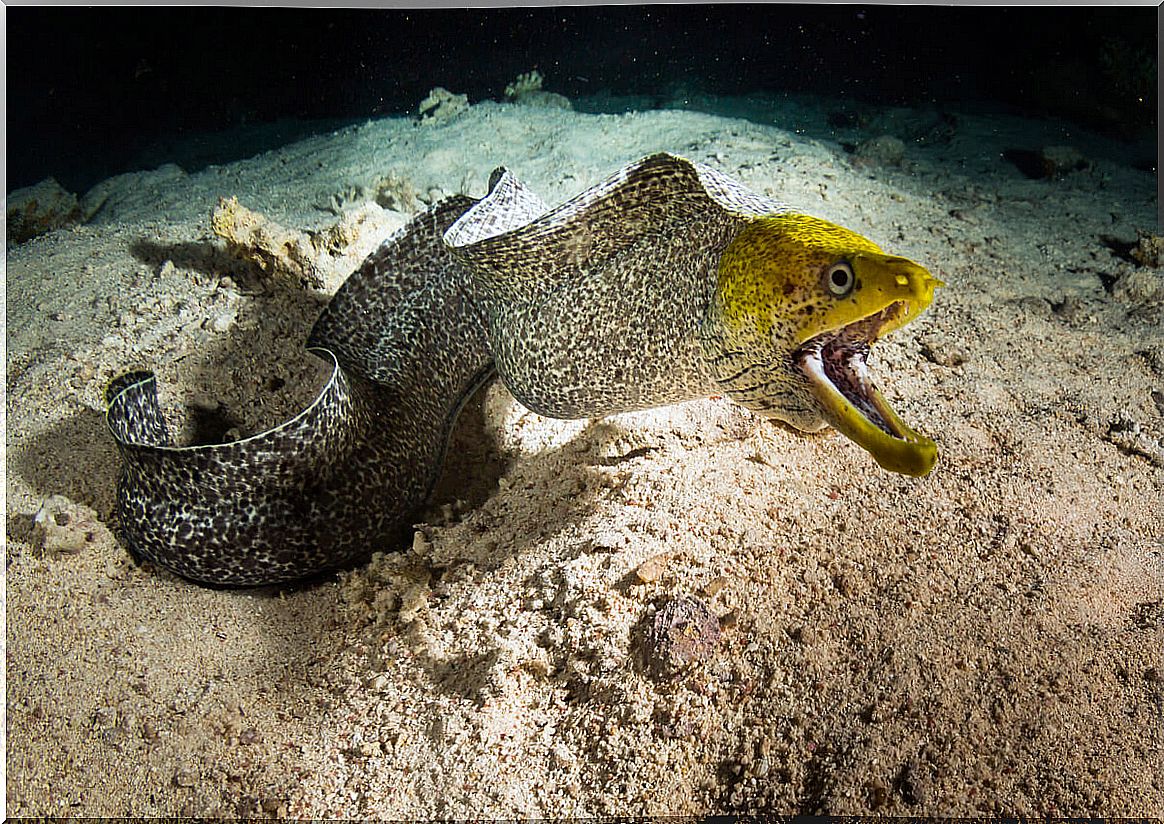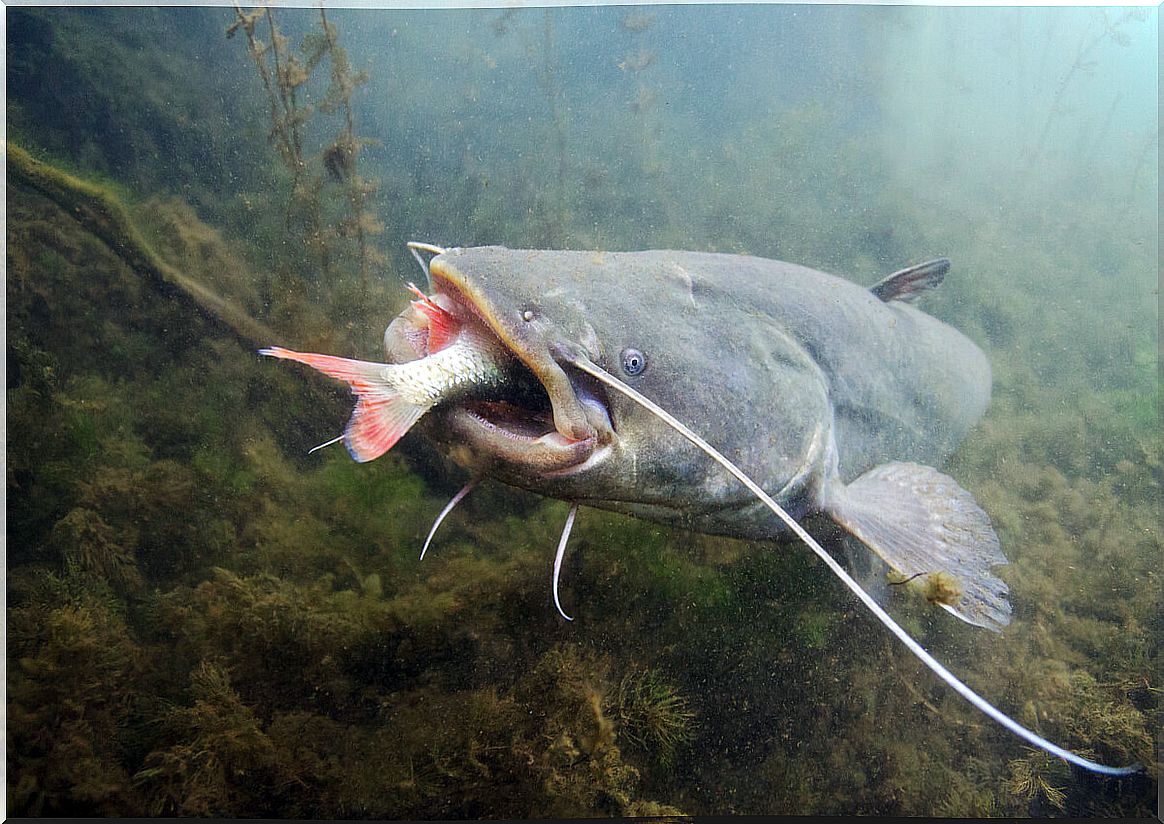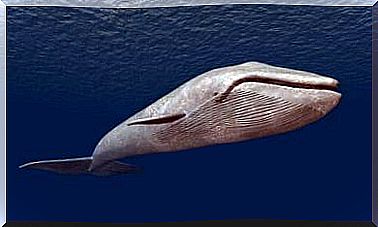Are There Fish Without Scales?

Although it sounds strange, not all fish are covered in scales. Fish form a very diverse group of vertebrates, as we can classify them based on their skeleton, jaw, habitat and whether or not they have scaly skin.
Aquatic ecosystems can be very varied, as well as the animals that inhabit them. Scaleless fish live in very different places and have defense mechanisms to survive attack by other animals. If you want to know more about them, keep reading.
Can a fish live without scales?
The scales cover the body of the fish and protect its internal environment from the outside. They also help them in their swimming movements.
These structures arise from the dermis of the fish and the same genes that participate in their formation are those involved in the development of the teeth and hair of mammals. The dentin that forms enamel is present in both structures.
There are different types of scales representative of different groups of fish: placoids, cosmoids, ganoids, cycloids and ctenoids.
With this variety and the protective function of scales, one wonders how evolution has selected fish without scales. How do these fish protect themselves from abrasions, predators and pathogens? What structures help swimming?
The absence of scales in these fish does not mean that they are limited, since natural selection has endowed these animals with other strategies to survive in their environment.
The lampreys and mixines, the fish without scales or jaws
Lampreys and mixins belong to a very primitive group of fish, the agnate or jawless fish. Its appearance is very different from any other type of fish. They are a delicacy in many parts of the world.
They have a cylindrical and elongated body, without even fins, only one dorsal and caudal fin. The most characteristic thing about these fish is their mouth, formed by circles of horny teeth, and their tongue is capable of acting as a suction cup on the surface of the species they parasitize.
The mixins have a similar body, but they lack the buccal funnel of lampreys. Instead, they feature barbel-shaped sensory organs.

Eel fish: conger eel, eel and moray eel
Both species have a similar appearance, similar to that of a snake, with a cylindrical body in the front area and flattened in the back.
The conger eel is bluish-gray in color, with full lips and small, conical teeth. It is nocturnal and takes advantage of the holes in the ground to stay hidden and stalk its prey at dusk, when it is most active.
Eels live in fresh water and migrate to the sea to reproduce, their appearance changes throughout their growth.
They have a very thick skin that protects them from temperature changes and at the same time makes it easier for them to breathe on the skin when they crawl out of the water. The famous electric eel lives in South American waters and can emit discharges of up to 850 volts.
Moray eels also have an anguilliform body, do not have scales and secrete protective mucous layers. In addition, they have a very thick skin with a high proportion of mucosa-producing cells that allows them to manufacture this substance more easily than other species of eels.
These fish hunt hidden in the sand and thanks to the mucosa, the sand grains remain attached to the surface of their skin and later to the walls of their burrow, reinforcing the refuge where they remain.

The catfish or catfish
Catfish stand out for their large size, as they can reach up to three meters in length and exceed 200 kilograms. They are the largest fish in all of Europe.
These giants do not have scales either, their skin is covered with abundant mucus. Catfish’s chins and olfactory papillae allow it to perceive chemical changes in the water.
It is an introduced species for sport fishing, in fact, it constitutes an invasive species in many regions, since it displaces the native species thanks to its adaptability to rivers, lakes and reservoirs.

The chimera fish or rat fish
Another example of fish without scales is chimera fish. These fish have a very striking appearance, with a prominent head with large eyes and a very long and flexible tail.
They inhabit the deep sea, they are adapted to darkness. Their bodies are naked with scales and a spine with which they can cause serious damage to their attackers.

As you can see, there is a great variety of fish without scales, which have adapted to very different environments with different defensive strategies.









